Few things say “comfort food” quite like a bowl of creamy mashed potatoes. Silky, buttery, and perfectly seasoned — they’re the ultimate side dish that makes everything better, from roast chicken to Sunday gravy. But getting them just right isn’t about luck — it’s about the right potatoes, the right technique, and a little kitchen patience.
Here’s how to make mashed potatoes so smooth and rich, they’ll steal the spotlight at dinner.

Step 1: Choose the Right Potatoes
The secret to creamy mashed potatoes starts before you even turn on the stove — with the right kind of potato.
- Russet potatoes: These are the classic choice — starchy, fluffy, and ideal for smooth, light mash.
- Yukon Golds: Creamier and naturally buttery in flavor, perfect if you like a richer texture.
- Combo approach: Mix Russets and Yukon Golds for the best of both worlds — fluffy yet rich.
Avoid waxy potatoes (like red or fingerling); they tend to get gluey when mashed.
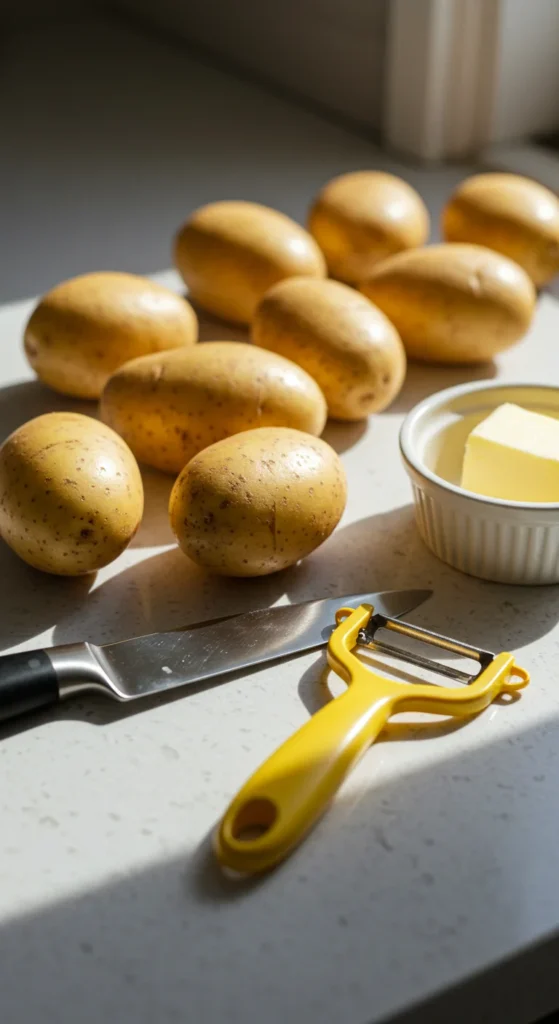
Step 2: Peel, Cut, and Boil Properly
Perfect texture starts with even cooking.
- Peel your potatoes (optional for rustic mash).
- Cut into equal chunks, about 1½ inches thick — uniform size means uniform cooking.
- Add them to a pot of cold salted water (not hot — this ensures they cook evenly).
- Bring to a boil, then simmer gently for 15–20 minutes, or until a fork slides in easily.
Pro tip: Don’t overcook. Mushy potatoes absorb too much water and turn gluey when mashed.
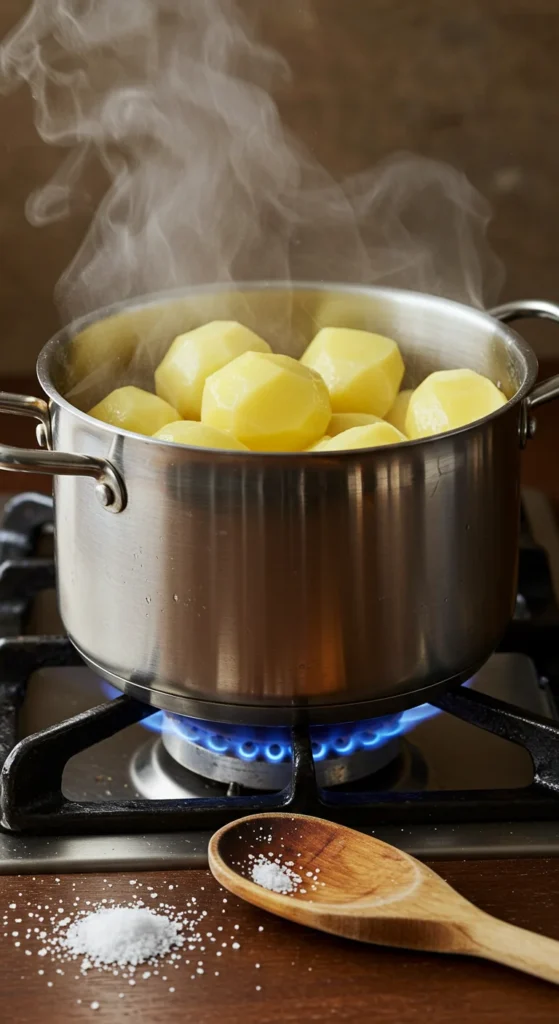
Step 3: Drain and Dry for Maximum Creaminess
Here’s a step most people skip — and it’s why their mash turns watery.
After boiling, drain your potatoes well, then return them to the hot pot for a minute or two over low heat. Gently stir to evaporate excess moisture.
This “drying step” creates the perfect base for absorbing butter and cream later, making your mash rich instead of soupy.
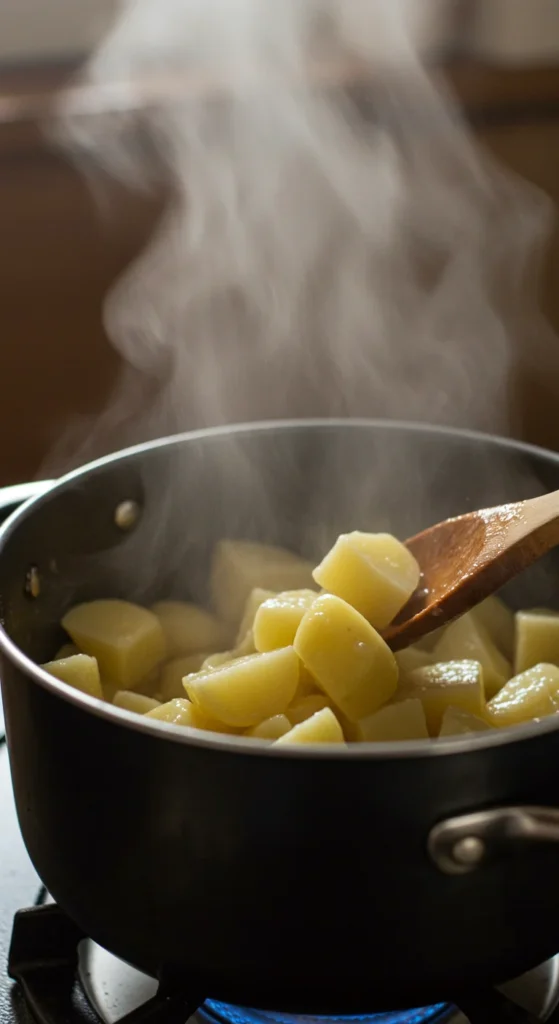
Step 4: Mash While Hot (and the Right Way)
While the potatoes are still warm, it’s time to mash. You can use:
- A potato masher for a rustic, homey texture
- A ricer or food mill for ultra-smooth, chef-style results
- Avoid blenders or food processors — they overwork the starch and make gluey potatoes
Mash lightly at first, then slowly add the good stuff:
- 4 tbsp unsalted butter (room temperature or melted)
- ½ to ¾ cup warm milk or cream (heat gently before adding)
- Salt and pepper to taste
Mix gently until smooth and creamy, adjusting milk or butter to your desired texture.
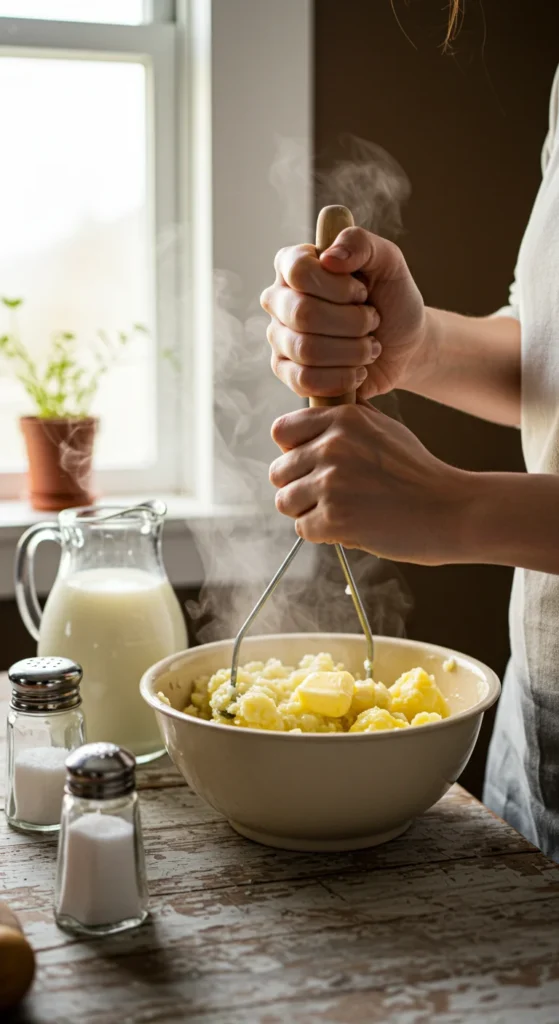
Step 5: Flavor It Like a Pro
Classic mashed potatoes are divine on their own, but if you want to level them up, try one (or more!) of these ideas:
- Garlic Mashed Potatoes: Roast a whole head of garlic, squeeze out the cloves, and mash them in for a nutty sweetness.
- Herb Mashed Potatoes: Stir in fresh chopped chives, parsley, or thyme for color and aroma.
- Cheesy Mash: Fold in shredded cheddar, Parmesan, or cream cheese for extra indulgence.
- Brown Butter Twist: Melt your butter until golden and nutty before mixing it in — the flavor is incredible.
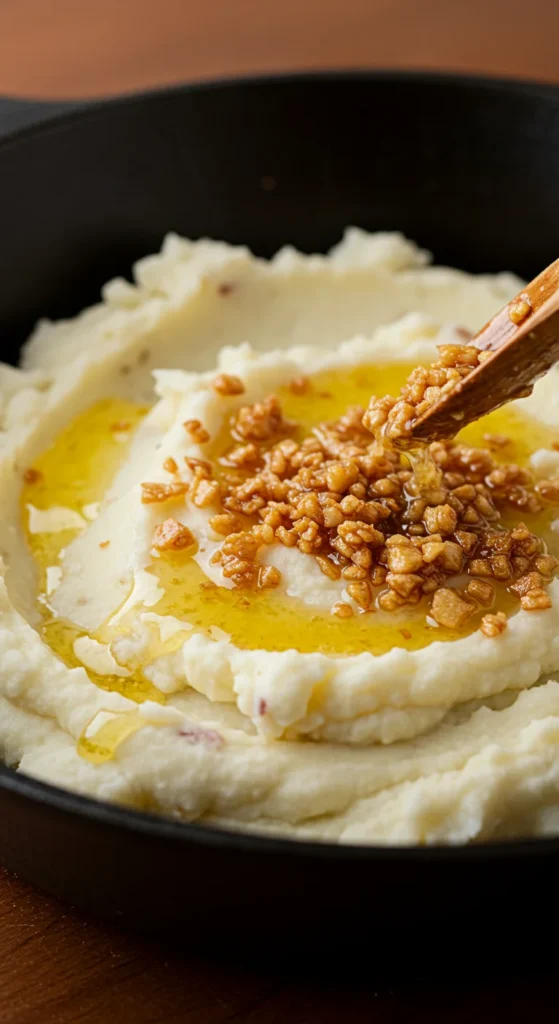
Step 6: Serve and Store the Right Way
Serve your mashed potatoes immediately while warm and fluffy. But if you’re prepping ahead, here’s how to keep them perfect:
- To keep warm: Transfer to a heatproof bowl, cover, and place over a pot of simmering water (like a double boiler). Stir occasionally.
- To store: Cool completely, then refrigerate up to 3 days. Reheat with a splash of warm cream or butter to revive the texture.
Mashed potatoes also freeze well — just thaw overnight and reheat slowly on the stove.
Final Thoughts
Homemade mashed potatoes are comfort food at its finest — creamy, buttery, and made with love. With the right potatoes, a few smart tricks, and plenty of butter, you’ll never settle for instant again.
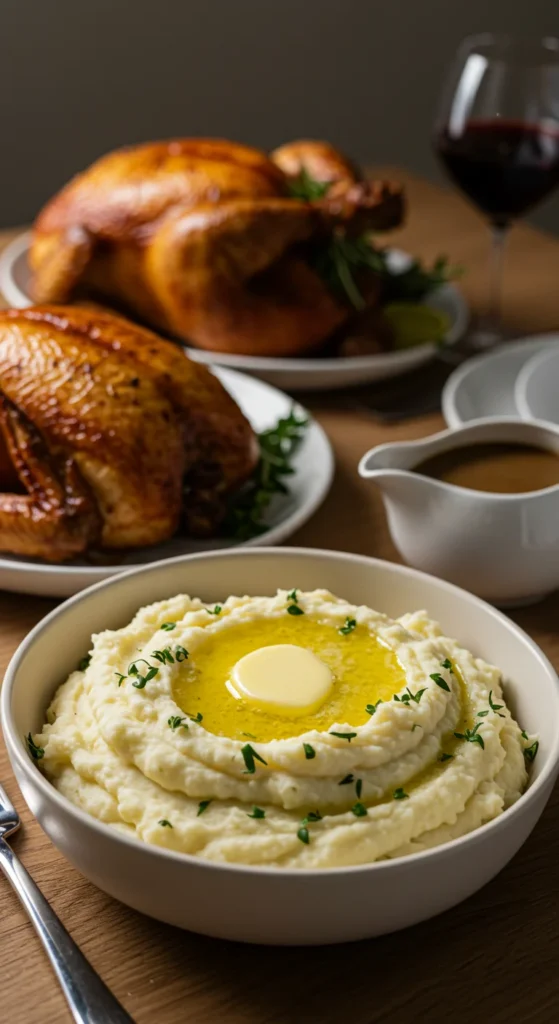



Leave a Reply